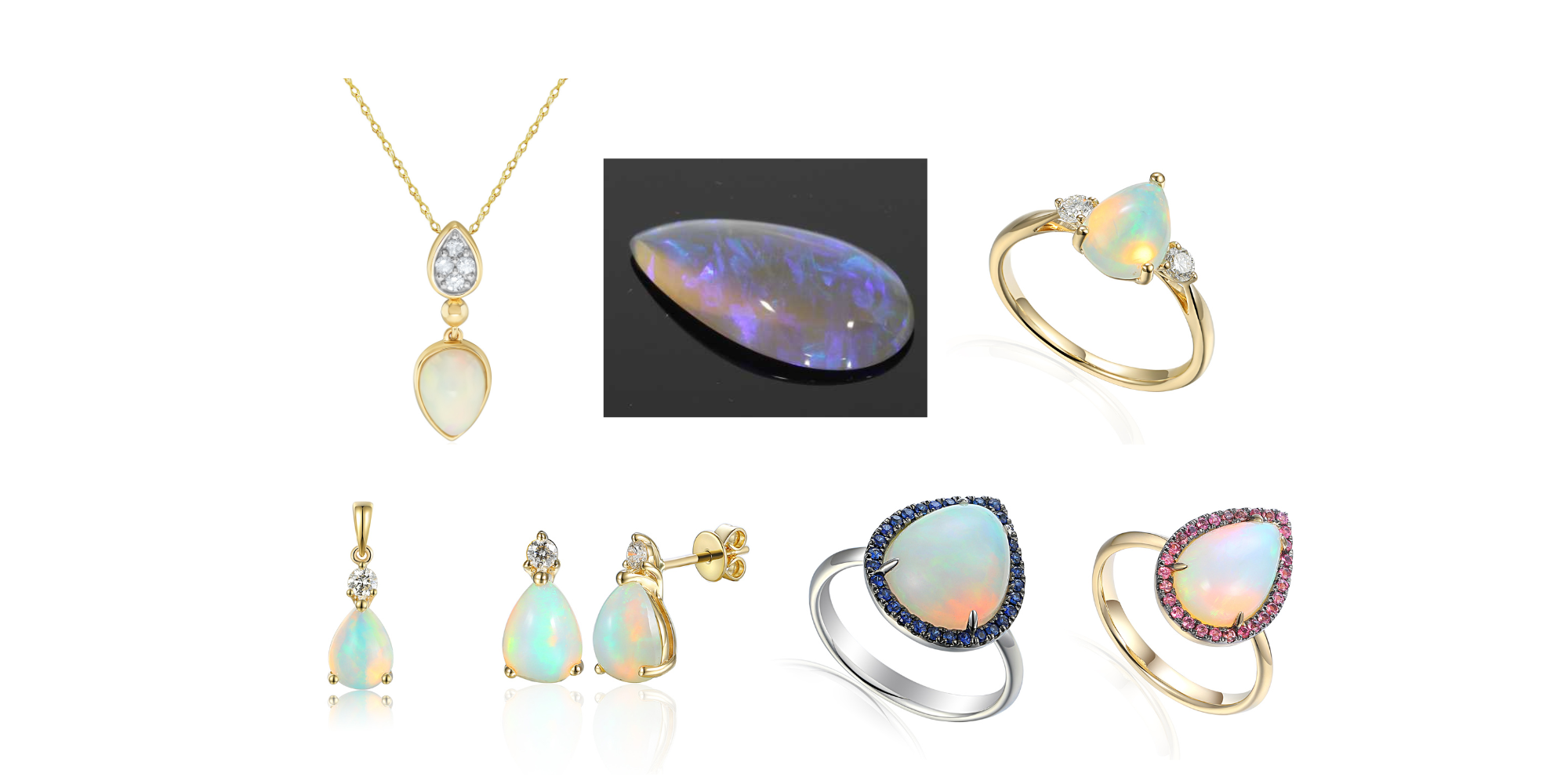As October rolls in with its crisp air and golden foliage, it’s time to shine a spotlight on the captivating birthstone associated with this month: the Opal. Renowned for its unique play-of-colour and unparalleled beauty, Opal is a favourite among gemstone enthusiasts.
Opal is a mineraloid formed from silica and water. Its formation process often involves a slow sedimentation of silica-rich solutions within rock crevices. This results in the creation of beautifully iridescent stones celebrated for their vibrant, shifting colours.
One of the most enchanting qualities of Opal is its extraordinary play-of-colour, where a single stone can display a myriad of hues. This phenomenon is caused by the diffraction of light within the internal structure of the opal, often described as a “rainbow within a rock”.
Throughout history, Opals have been revered and surrounded by fascinating myths:
- Romans viewed Opal as a symbol of hope and purity, often associating it with good luck and fortune.
- Ancient Greeks believed Opals bestowed the gift of prophecy and protection against diseases.
- Medieval Europeans considered it a symbol of hope, innocence, and purity, believing it possessed all the virtues of the gemstones whose colours resided in it.
Types of Opals
- White Opal: Known for its light body tone and vibrant flashes of colour. These are among the most common types of opals.
- Black Opal: Characterised by a dark body tone that enhances its play-of-colour, making it one of the most valued varieties.
- Fire Opal: Unlike other opals, fire opals are known for their vivid red, orange, or yellow hues and are typically found in Mexico. They may or may not exhibit play-of-colour.
- Boulder Opal: These opals interact with the host rock, often resulting in interesting and unique patterns.
Caring for Your Opal Jewellery
Given their relatively delicate nature, Opals require special care to maintain their beauty:
- Storage: Store opal jewellery separately from harder gemstones to avoid scratches. Cushioned pouches or lined jewellery boxes are ideal.
- Cleaning: Clean with a soft, damp cloth. Avoid using chemical cleaners or ultrasonic cleaners as they can damage the stone.
- Wear with Care: Due to their softness, opal jewellery should ideally be worn on special occasions rather than as everyday pieces to prevent damage.
The pieces pictured are available from CMJ suppliers – from left, a 9ct yellow gold diamond and Opal necklace from Mark Milton, an Australian pearl shape opal from CR Gems and a set of pear shape opal and diamond ring, earring and pendant and Ntinga’s new coloured gemstone halo around opal which we have done in blue sapphire and pink tourmaline.




